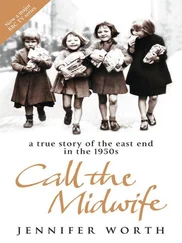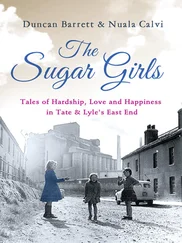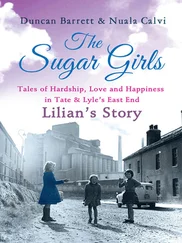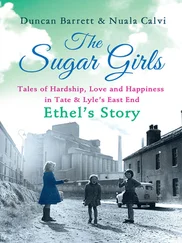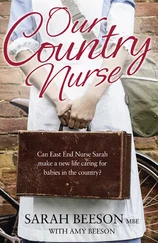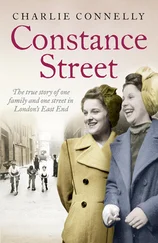Primigravida. A woman pregnant with her first baby.
Prolapsed cord. Occurs after the membranes have broken and the cord is found outside the uterus.
Restitution of the head. A normal corrective movement of the baby’s head during delivery to bring it back into natural line with the shoulders.
Second stage. The second stage (of labour) is the time when the neck of the womb or uterus is fully open, and the mother starts to push until the delivery of the baby.
Special diet. It was thought that a restricted diet and restricted fluid intake would improve the symptoms of pre-eclampsia. It has now been proved that these restrictions had no effect upon the course of pre-eclampsia and are no longer practised. Pre-eclampsia is treated with rest and drug therapy.
SRN. State Registered Nurse.
Staphylococcus aureus. A bacterium that is commonly found on human skin and mucosa (lining of mouth, nose, etc.). It lives completely harmlessly on the skin and in the nose of about one-third of normal healthy people.
Staph infection. Staphylococcus aureus can infect wounds during or after childbirth or during surgical procedures. These infections may become serious.
Third stage. The third stage of labour is the time from the delivery of the baby to the end of the delivery of the placenta (afterbirth) and control of bleeding.
Transverse lie. Where the baby lies across the mother’s womb (instead of parallel to the mother’s spine) and so cannot descend through the pelvis for a normal birth.
Unstriped muscle. An outdated term for smooth muscle.
Volsellum forceps. Forceps designed to hold the cervix during gynaecological procedures.
Sources for the ‘Lost Babies’ chapter
Booth, Charles, ‘The Life and Labour of the People of London’’ vols. I-IX, The Journals of the Royal Statistical Society , 1887.
Booth, General William, In Darkest England , 1890.
Fishman, Professor W. J., East End 1888 , Duckworth, 1988 .
Fishman, Professor W. J., The Streets of East London , Duckworth, 1979.
Jordan, Jane, Josephine Butler , John Murray, 2000.
Keating, P., ed., Into Unknown England 1866-1913 , Fontana, 1976.
Mearns, Andrew and Preston, William, The Bitter Cry of Outcast London , 1883.
William, A. E., Barnardo of Stepney , Allen and Unwin, 1943.
Sources for the ‘Nancy’ chapter
Jordan, Jane, Josephine Butler , John Murray, 2000.
Moberly Bell, E., Josephine Butler , Constable, 1962.
Petrie, Glen, A Singular Iniquity (Campaigns of Josephine Butler) , Macmillan, 1971.
Stafford, Ann, The Age of Consent , Hodder and Stoughton, 1964.
Williamson, Joseph, The Forgotten Saint , The Wellclose Trust, 1977.
Ballière’s Nurse’s Dictionary , 7th edition, ed. B. Cape, Ballière Tindall, 1968.
Myles, M., Text Book for Midwives , ed. V. Ruth Bennett and L. K. Brown, Churchill Livingstone, 1999.
Stables, D., Physiology in Childbearing with Anatomy and Related Biosciences , Ballière Tindall, 1999.
‘Youth is such a wonderful thing. What a crime to waste it on children.’ George Bernard Shaw. The quote in the chapter title is from Shakespeare, Twelfth Night , act 2, scene 3.
The Midwives of St Raymund Nonnatus is a pseudonym. I have taken the name from St Raymund Nonnatus, the patron saint of midwives, obstetricians, pregnant women, childbirth and newborn babies. He was delivered by Caesarean section (‘ non natus’ is the Latin for ‘not born’) in Catalonia, Spain, in 1204. His mother, not surprisingly, died at his birth. He became a priest and died in 1240.
The meaning is too rude to print, but those interested can consult Rude Cockney Rhyming Slang by Jade Janes, published by Abson Books, London, 1971.
A full glossary of obstetric terms is included at the back of the book.
I have drawn on several sources for this chapter. For more information a full list is given in the bibliography.
See Call the Midwife , p. 221.
Charles Booth, The Life and Labour of the People of London , Vols. I to IX, The Journals of the Royal Statistical Society, 1887.
If you want to know why the mother took that attitude, and how the story ended, you will have to read Call the Midwife !
Jane Jordan, Josephine Butler , John Murray, 2000.
For this account of the life of Josephine Butler, I have referred to several sources, all of which are detailed in the Bibliography.
A lock hospital was the official term for a hospital treating venereal disease. The infected patients could not leave and were locked in. It was effectively a prison.
This essay is not intended as a medical analysis of tuberculosis. I am not a doctor and did not train as a tuberculin nurse. It is merely intended to provide an historical background to the story of the Masterton family, for those who may be interested. My main source of information has been the book The White Plague by Ren’ and Jean Dubois, published in 1953 by Victor Gollancz Ltd.
My thanks to the Marie Stopes Society for reading and approving this essay.

![Мелисса де ла Круз - Ведьмы Ист-Энда. Приквел - Дневники Белой ведьмы[Witches of East End. Prequel - Diary of the White Witch]](/books/87885/melissa-de-la-kruz-vedmy-ist-thumb.webp)


